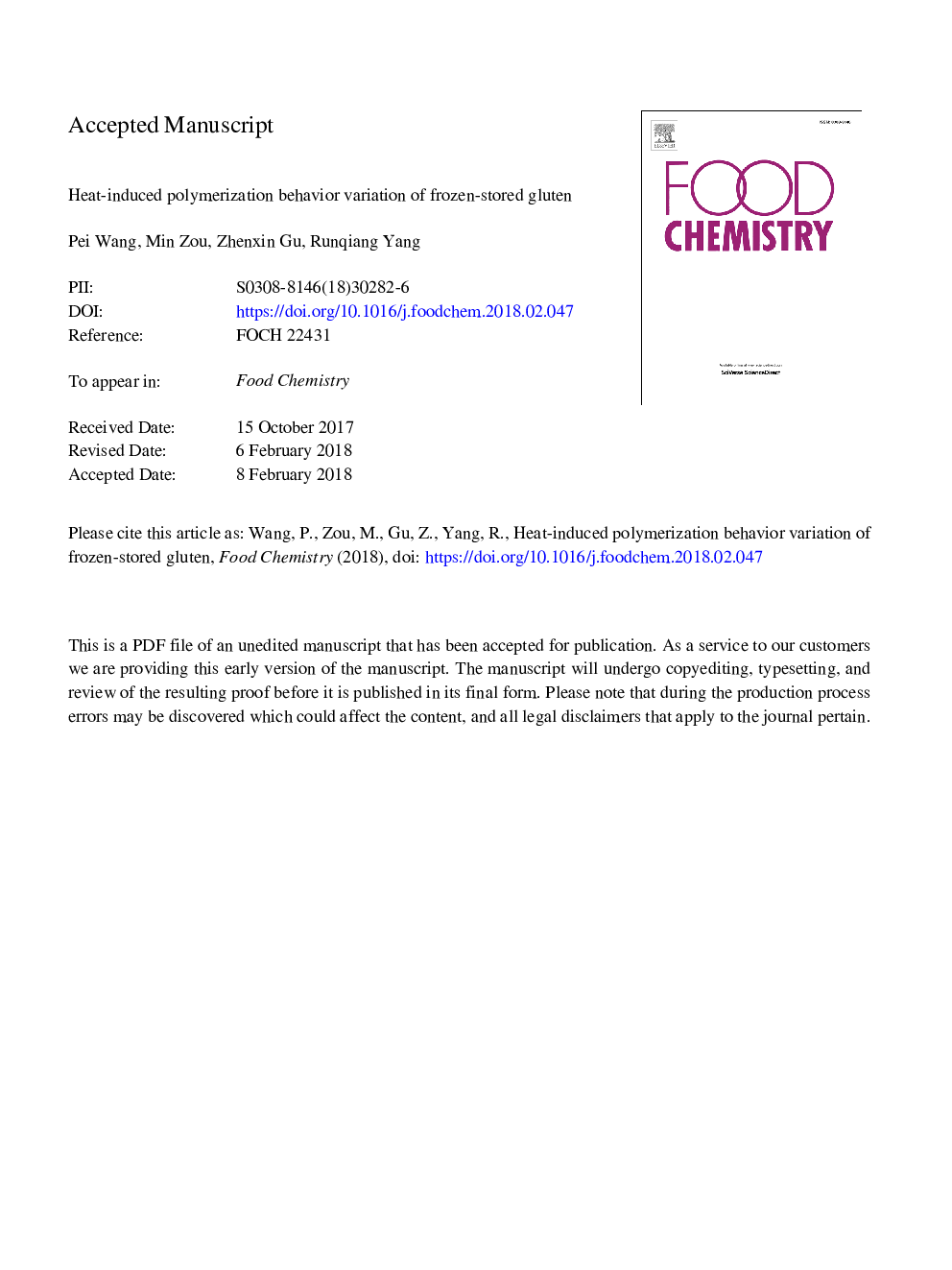| Article ID | Journal | Published Year | Pages | File Type |
|---|---|---|---|---|
| 7585448 | Food Chemistry | 2018 | 38 Pages |
Abstract
The current study comparatively investigated the heat-induced polymerization behavior of fresh and frozen-stored gluten to replenish the gluten deterioration mechanism in frozen dough from the perspective of subsequent polymerization behavior during heating. The results showed that disulfide-mediated polymerization of frozen-stored gluten upon heating at 95â¯Â°C was suppressed. The polymerization ability of glutenin was weakened rather than gliadin for frozen-stored gluten. Enhanced level of β-structures at the expense of α-helices was detected during the incipient heating of fresh gluten, while converse trend was noticed for the frozen-stored gluten. Frozen-stored gluten exhibited less exposure of surface hydrophobic groups during the initial heating, suggesting that it was less responsive to the unfolding process. The weakened viscoelastic properties of frozen-stored gluten throughout heating protocols were mainly originated from glutenin macropolymer depolymerization as well as the hindered formation of glutenin-gliadin crosslinking and non-covalent bonds.
Related Topics
Physical Sciences and Engineering
Chemistry
Analytical Chemistry
Authors
Pei Wang, Min Zou, Zhenxin Gu, Runqiang Yang,
